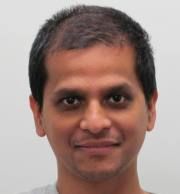Anyone interested in astronomy or the stars, will want to attend the free lecture, "Life of a Hot Star" being presented by Dr. Asif ud-Doula, on Thursday, Nov. 3 at 7 p.m. in the Study Learning Center's Sherbine Lounge.
This event is free and open to the public, and is sure to provide a fascinating glimpse and offer some basic understanding into the stellar mysteries that exist far above us in the sky.
When we look at the night sky, we see many different shiny dots. Most of these dots represent stars. But not all stars are equal. They have different size, mass and temperature. The Sun is an average star with relatively small mass and size. But there are stars that are many times more massive than the Sun, and they can shine up to a million times as bright as the Sun. These stars are born, they live and they die in one of the most spectacular events called supernova explosion.
Dr. ud-Doula, as assistant professor of physics at Penn State Worthington Scranton, will discuss, in layman's terms, the life cycle such a hot massive star, as well as give an overview of his research on the winds of these massive stars, a transient phase in their life cycles.
His research has been presented at several international conferences and workshops.
In September, he traveled to the Czech Republic to give a presentation, "Massive Star Winds and their Cicumstellar Disks," in which he discussed the nature of how these stellar winds can be affected by the presence of stellar magnetic fields.
"For the first time in human history, we were able to measure directly the spin-down rate of a massive star, Sigma Ori E, located in the Orion Belt, which was in good agreement with our theoretical prediction," he explained.
Last spring, he was the only non-European scientist invited to present his work, "Stellar winds, MHD and Disks" at the Centre Nationale de la Recherche Scientifique's conference, which was supported by the European Space Agency.
In February, 2012, Dr. ud-Doula will travel to Brazil to give a 'review' talk at the European Southern Obseratory's conference, which brings together both the theoreticians and observers in the active, hot stellar astrophysics community, to share what can be learned from high resolution observations.
Before joining Penn State Worthington Scranton, Dr. ud-Doula was an assistant physics professor at Morrisville State College and was an instructor at Widener University and the University of Delaware.
He was a NASA Space Grant College Graduate Fellow at the Bartol Research Institute and has been awarded numerous research grants, including a grant as a co-investigator on NASA's Long Term Space Astrophysics program and a NASA/DSGC Graduate Fellowship.
He resides in Dalton with his wife, Dr. Lili Bao, a senior chemist, and their son.
